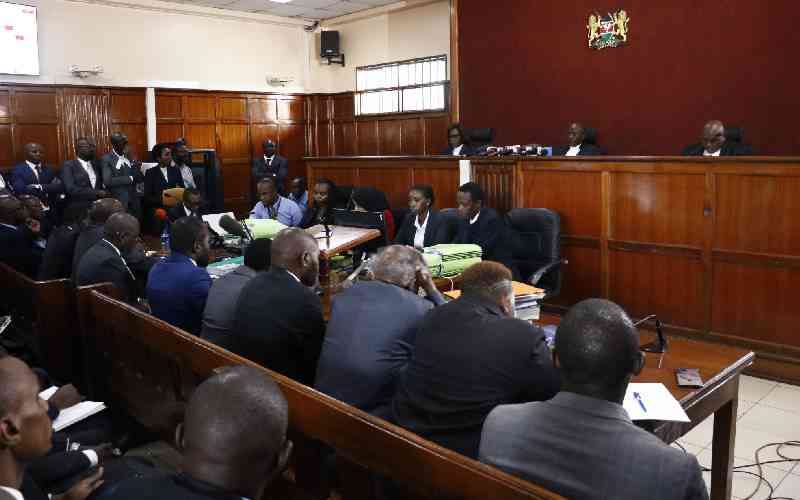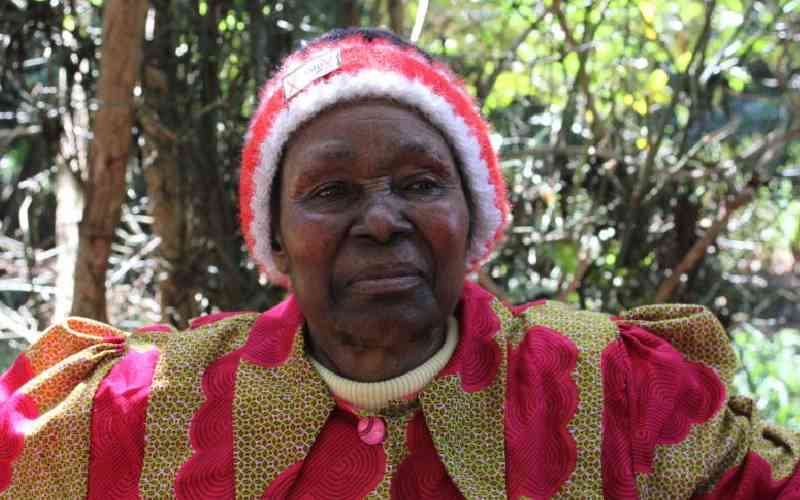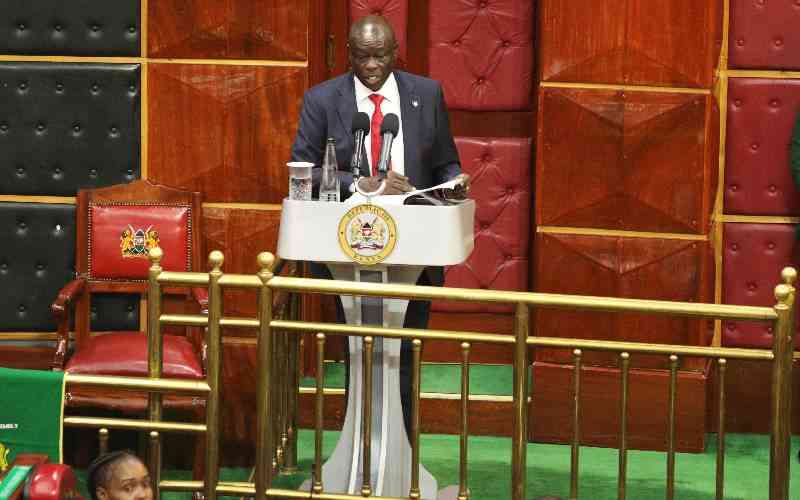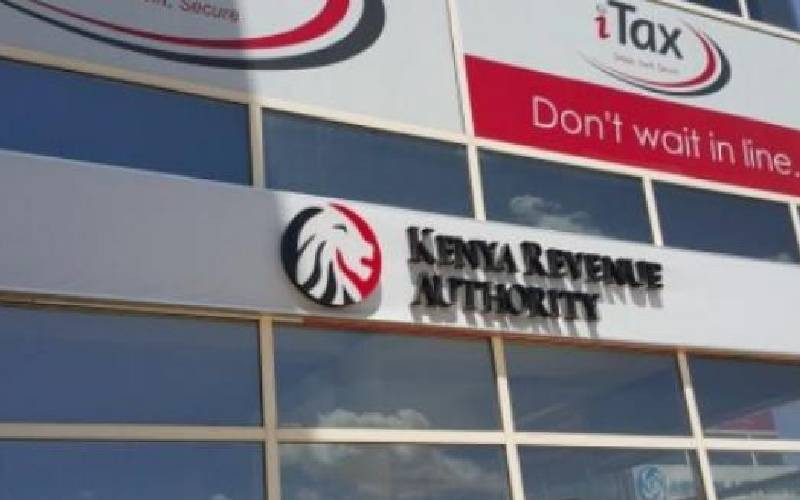Think Kenyatta Avenue, Muindi Mbingu or Kimathi Streets, all these have seen their names change with time, reflecting the changing socio-political reality, writes WANGECI KANYEKI
From its township days, Nairobi central business district (CBD) has morphed from the time it was declared a city in 1950 and now boasts being home to commercial skyscrapers blended with monumental buildings bearing a strong British architectual influence.
Connecting them is a network of roads tucked with rich history. Felix Kipkoech Melly Tiony, Secretary of National Museums of Kenya’s Heritage Walking Tours, shares some insights on the names and what influenced the renaming of the CBD roads when Kenya gained independence in 1963.
KENYATTA AVENUE:
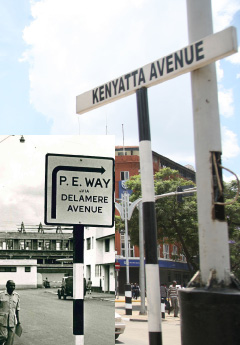
Named after the first president of Kenya, Mzee Jomo Kenyatta, this is the principal street in the Nairobi CBD and remains the widest road.
Kenyatta Avenue was originally called Sixty Avenue and renamed as Lord Delamere Avenue in 1932 following the death of Lord Delamere in honour of the pioneer white settler and colonial administrator. Delamere had erected a statue at an “island” between Kenyatta Avenue and Kimathi Street outside the New Stanley Hotel.
However, in the early 1930s, the Delamere family asked the government to remove it. It was relocated to Soysambu ranch in Elementaita, Naivasha. In memory of those who died in the two World Wars, a memorial monument of three soldiers was erected on Kenyatta Avenue. Four streets branch out of Kenyatta Avenue, namely Kimathi Street, Muindi Mbingu Street, Wabera Street and Koinange Street, which had originally been named after the first, second, third and fourth colonial commissioners who were later given legislative powers to become governors.
KIMATHI STREET:
This road was formerly known as Hardinge Street, but was later renamed Kimathi Street after Field Marshall freedom fighter, Dedan Kimathi, to honour his role in the Mau Mau War. A statue of Dedan Kimathi, made by Francis Kaguru, was erected at the northern side of the Hilton Hotel a few years ago.
Joseph Gachanja, a senior citizen who witnessed the changing of street names, recalls that there was a central bus station near the Hilton Hotel and Empire Cinema occupied the current space where IPS Building stands today.
The Stanley House, built in 1902, was also based on this street and the Horse Shoe Coffee Bar was opposite the present-day Nation Centre. Kenwood Building housed the Kenya Power and Lighting headquarters while Woolworth Building, which according to A brief Tour of the Buildings of Nairobi, a book by Iwatani & Wanjiku, was opened in 1914 but razed down by a fire in 2009 when Nakumatt supermarket burnt down.
MUINDI MBINGU:
Formerly Stewart Street, the road was named in honour of Coastal elder Samuel Muindi Mbingu who led a protest from Machakos to Nairobi with natives who were unhappy with a colonial policy requiring that Africans de-stock cattle by seizing the cattle by force, taking away their wealth. Muindi Mbingu led the protest match from Machakos and was arrested when they arrived in Nairobi and depoted to Kismaiyu. He eventually died in 1953.
KOINANGE STREET:
Stay informed. Subscribe to our newsletter
This street was named after paramount chief Koinange wa Mbiyu who worked for the British colonial government but was not shielded from the humiliation when the colonial government gave a directive that natives were not allowed to grow cash crops such as coffee.
Koinange defied that directive and went ahead to try his hand in coffee farming, which had been brought by the British. The street was named after him for his courage in fighting for the grievances of Africans.
WABERA STREET:
The street was named after the first African Isiolo District Commissioner, Daudi Dabasso Wabera, who was gunned down protecting Kenyan territory against Somalis who wanted to take over northern Kenya from Isiolo upwards. According to African News Online, Kenya would probably have a much smaller geographical acreage were it not for Wabera. Today, Wabera’s name stands out in a city where street names are dominated by political players.
BIASHARA STREET:
It was formerly known as Bazaar Street, the Indian word for (biashara or business). The street had Indian wholesalers and shops were owned by Indian dukawallas who traded on the street. According to Iwatani & Wanjiku in A brief Tour of the Buildings of Nairobi, Biashara Street experienced its first major change in 1916 as a result of the bubonic plaque when Indian shopkeepers moved away temporarily. The street was rebuilt with proper planning with shopkeepers boldly displaying their own taste of architecture.
TOM MBOYA STREET:
This was previously called Victoria Street, after the queen and renamed to Tom Mboya after the prominent political personality in Kenya’s history, Tom Mboya. The road was renamed Tom Mboya to honour and commemorate the assasinated politician who was the founder of Nairobi People’s Congress Party, a key figure in the formation of the Kenya African National Union (KANU) and the Minister of Economic Planning and Development at the time of his death in 1969.
A monument in his honour is erected on Moi Avenue. In the 1950s, several key places on this road was Victoria Bar, which was a popular joint with the British Army and the Chez Joseph restaurant, which is the modern day Express Bar, recalls Gachanja.
MOI AVENUE:
It was initially known as First Station Road between 1899 and 1902. Thereafter, it was renamed Government Road in 1901 as most government offices were situated along that road such as Ministry of Lands, which was in present-day Moi Avenue Primary, while Imenti House was the Town Hall, says Tiony. The road was renamed Moi Avenue after former President Daniel Arab Moi came to power.
MURANGA ROAD:
This road was previously called Forthall Street or Swamp Road because Nairobi was swampy and that area near the Nairobi River was extra swampy.
Gachanja recalls that in the 1950s, there was a popular Indian curry house called Friends Corner Bar and Restaurant and a prominent lawn mower repair shop near the modern-day Red Crescent. Where the Fig Tree Bar and Restaurant now stands, there was the Lady Grid Hospital. The street also housed the Sikh Union Temple and behind it was the Goan Institute.
RONALD NGALA:
It was previously known as Duke Street after the British noblemen of the highest hereditary rank. After independence, this road was renamed after Ronald Ngala, who was the leader of opposition party, Kenya African Democratic Union (KADU), during Kenyatta’s government. Gachanja adds that there was a gunsmith shop situated where modern-day Tuskys Supermarket is.
UNIVERSITY WAY:
Was previously named Kingsway or Tenth Avenue. All state delegates used Moi Avenue and University Way as they headed to The Government House (the current State House). University Way housed Kingsway Police Station, which is modern-day Central Police station.
It had the Persian carpet shop situated at the corner of Kingsway House, which also housed the Special Branch headquarters after Kenya gained independence. Also situated on that road was the Royal College, Nairobi, which is today the University of Nairobi. The Jewish synagogue is situated there even today.
HAILE SELASSIE:
This was previously called White House Road named after the Chief Railways Engineer George Whitehouse. According to Gachanja, this road held the East African Railways and Harbours Headquarters and White House Bakery in the 1950s. Near the Kenya Polytechnic (currently the Technical University of Kenya) was the Road Avenue Clinic and the government press.
MAMA NGINA STREET:
During the colonial era, this road was called Queens Way and renamed Mama Ngina Street after President Kenyatta’s wife. A coffee bar called Act 1 Scene 1 stood opposite the entrance of City Hall at Travel House, formerly UTC building.
There was (and still is) also the Twentieth Century cinema and Barclays Queensway branch retaining the name of the previous road title. As Silopark House, people would park at the basement and cars would be lifted to an elevated parking bay, recalls Gachanja.
HARAMBEE AVENUE:
This was the Coronation Avenue. Parliament Road and Loita Street were non-existent and instead were the railway alignment heading towards Chiromo Road. The railway line was moved to its current location to expand the CBD.
Coronation Avenue had the famous City Hall Garden Restaurant. In the 1950s, Jogoo House was the secretariat while oil companies, Shell & BP, were tenants where the Deputy President’s office is currently situated.
There was also the county hall, which used to accommodate the councillors, which is part of modern-day Parliament premises. Also located on this road was the Bharat Building, which was the high commission of India and the Air India office.
MFANGANO STREET:
This street used to be called Jivanjee Avenue named after Asian born Alibhai Mula Jivanjee. As an entrepreneur in Kenya, he became a wealthy building contractor and owned most of the buildings East of Moi Avenue. He provided a park for Nairobians to rest, which is the modern-day Jivanjee Gardens, which is named after him and he placed a statue of Queen Victoria, a monument of himself, which was unveiled in 1904 by the Duke of Collaught.
 The Standard Group Plc is a
multi-media organization with investments in media platforms spanning newspaper
print operations, television, radio broadcasting, digital and online services. The
Standard Group is recognized as a leading multi-media house in Kenya with a key
influence in matters of national and international interest.
The Standard Group Plc is a
multi-media organization with investments in media platforms spanning newspaper
print operations, television, radio broadcasting, digital and online services. The
Standard Group is recognized as a leading multi-media house in Kenya with a key
influence in matters of national and international interest.
 The Standard Group Plc is a
multi-media organization with investments in media platforms spanning newspaper
print operations, television, radio broadcasting, digital and online services. The
Standard Group is recognized as a leading multi-media house in Kenya with a key
influence in matters of national and international interest.
The Standard Group Plc is a
multi-media organization with investments in media platforms spanning newspaper
print operations, television, radio broadcasting, digital and online services. The
Standard Group is recognized as a leading multi-media house in Kenya with a key
influence in matters of national and international interest.



